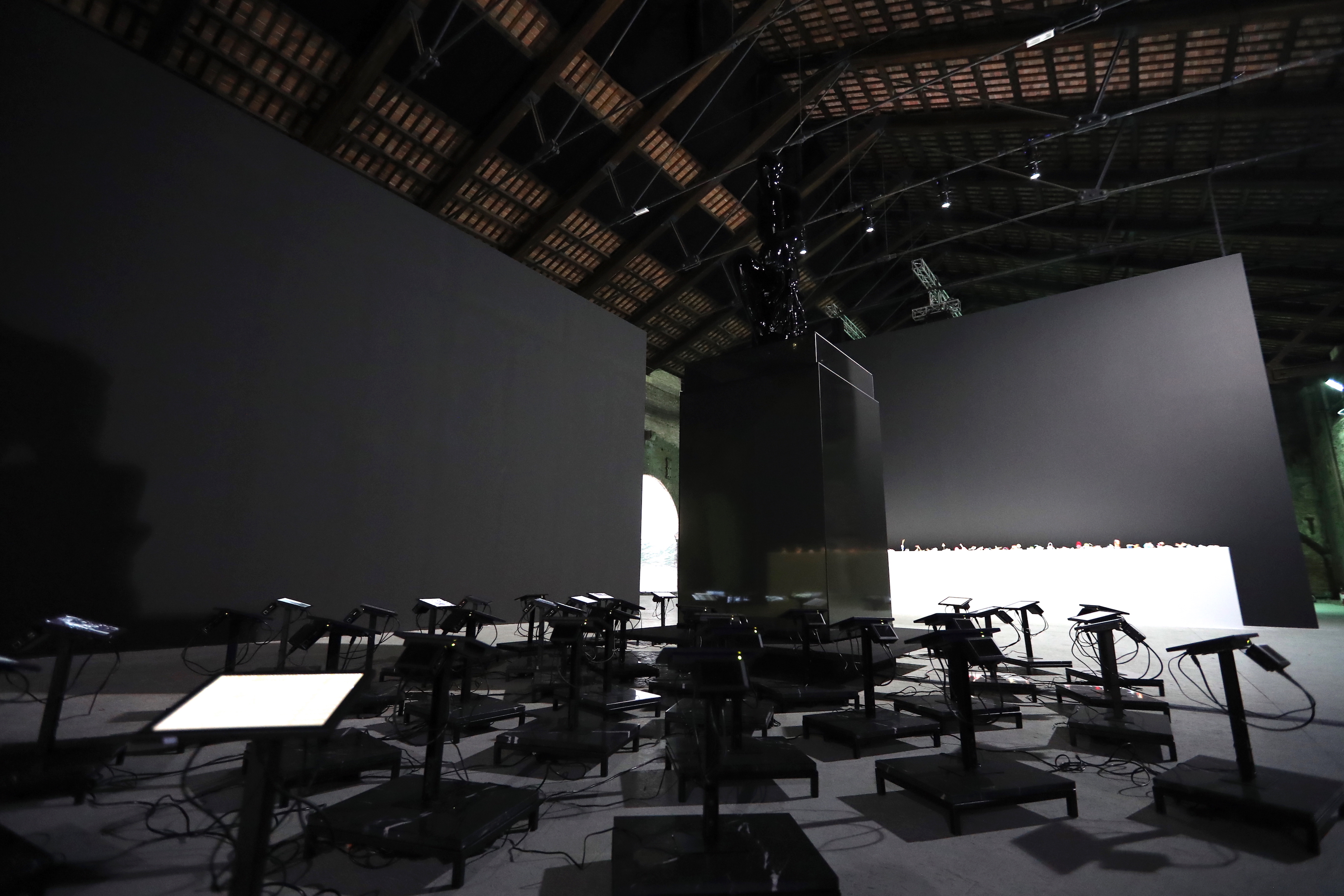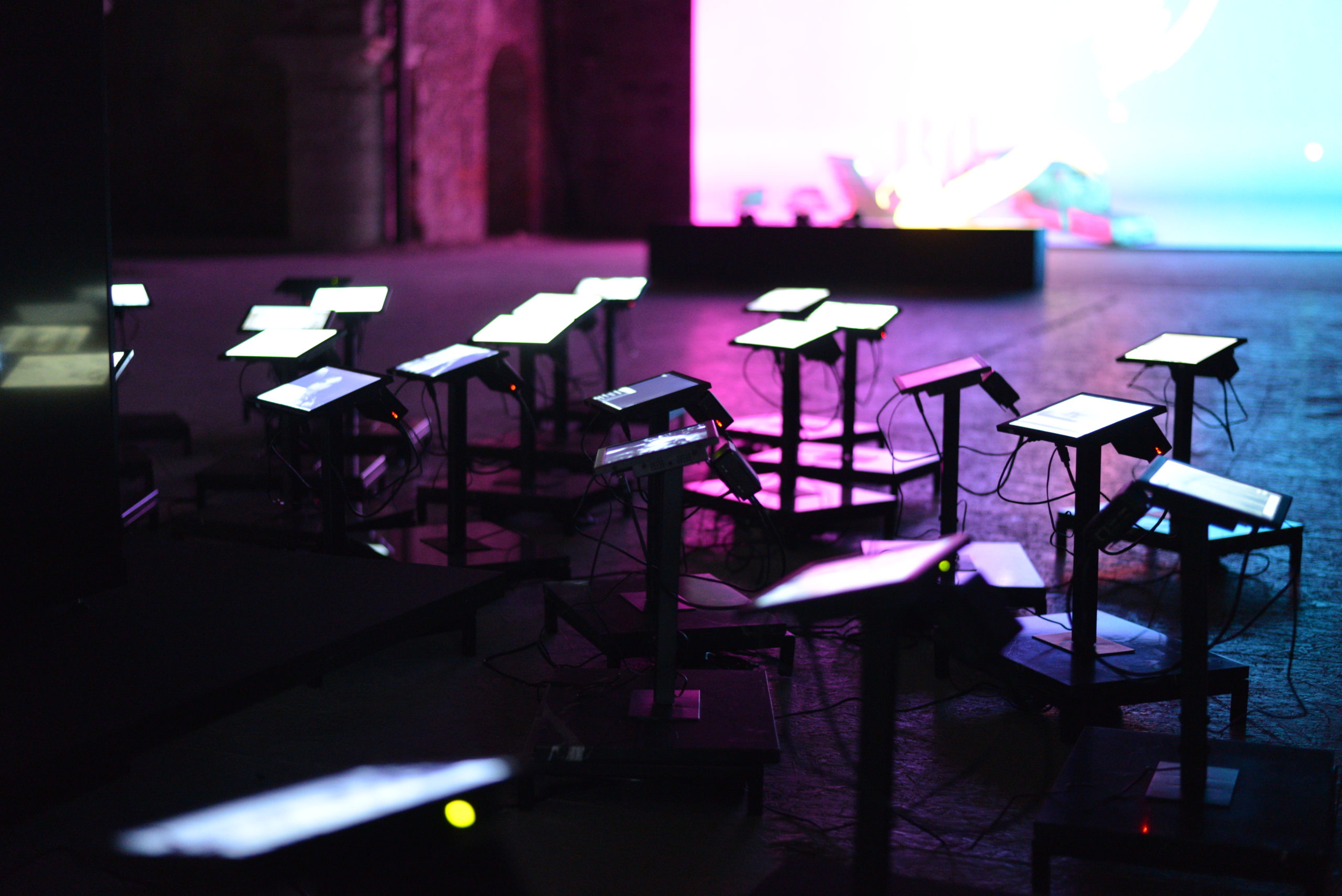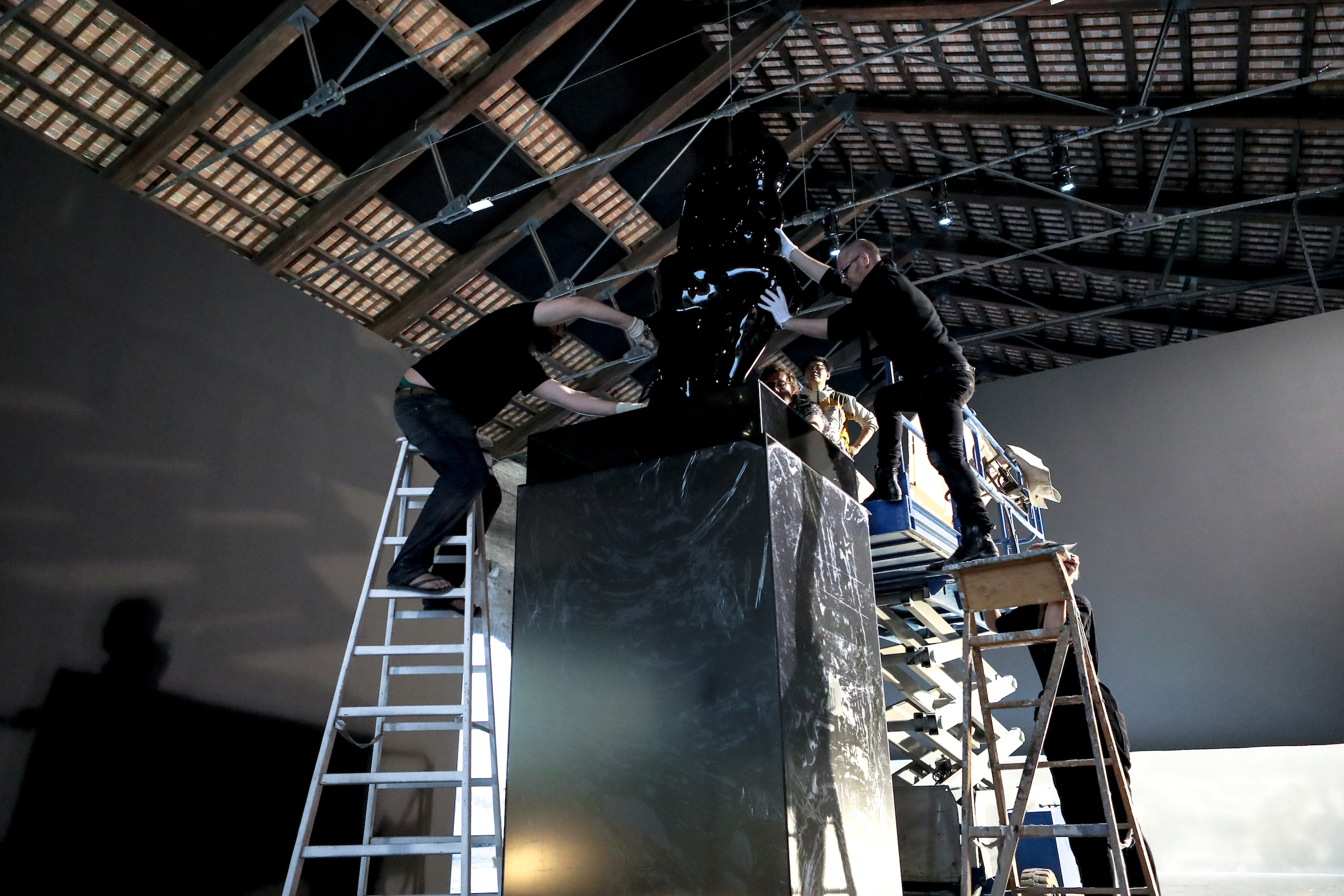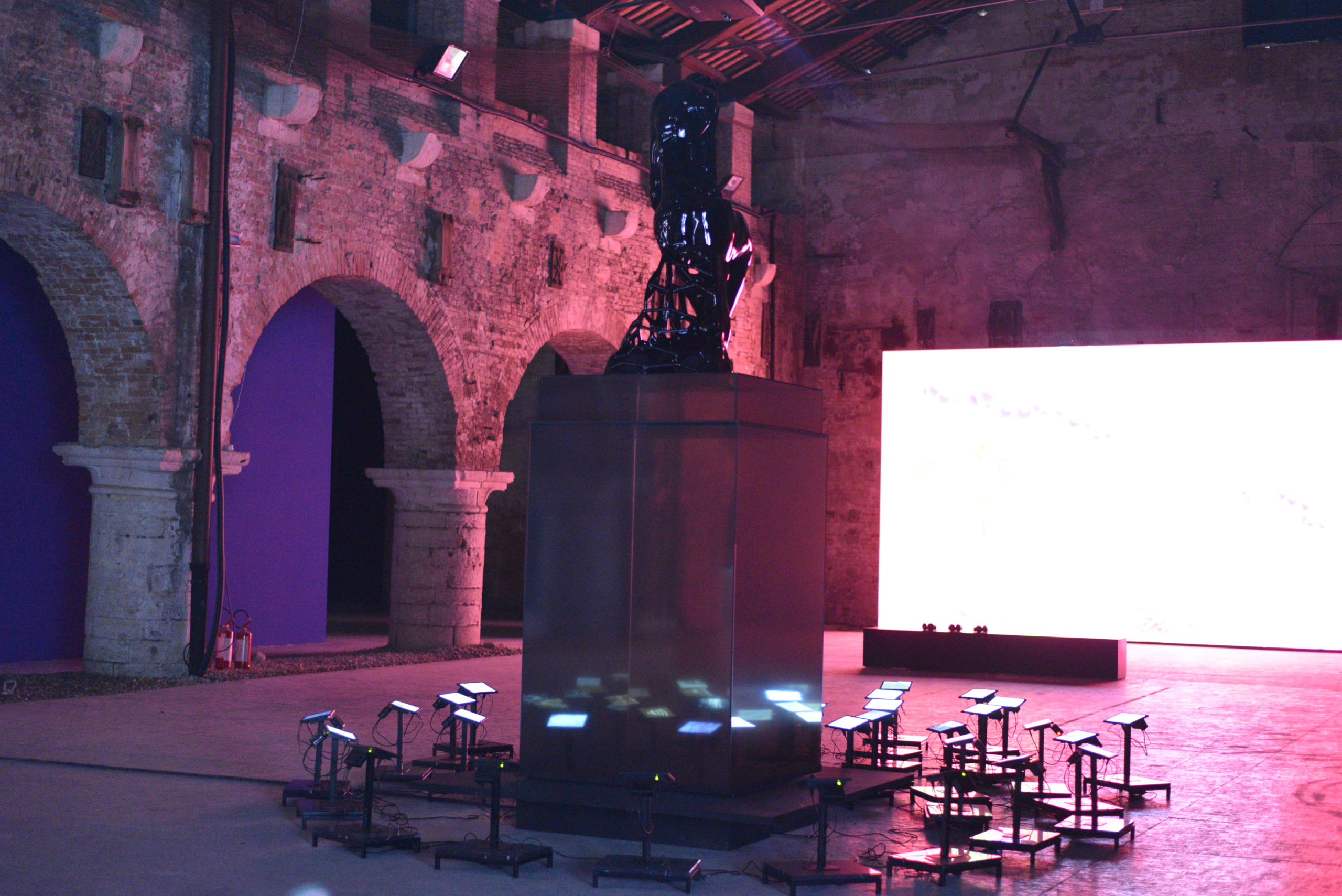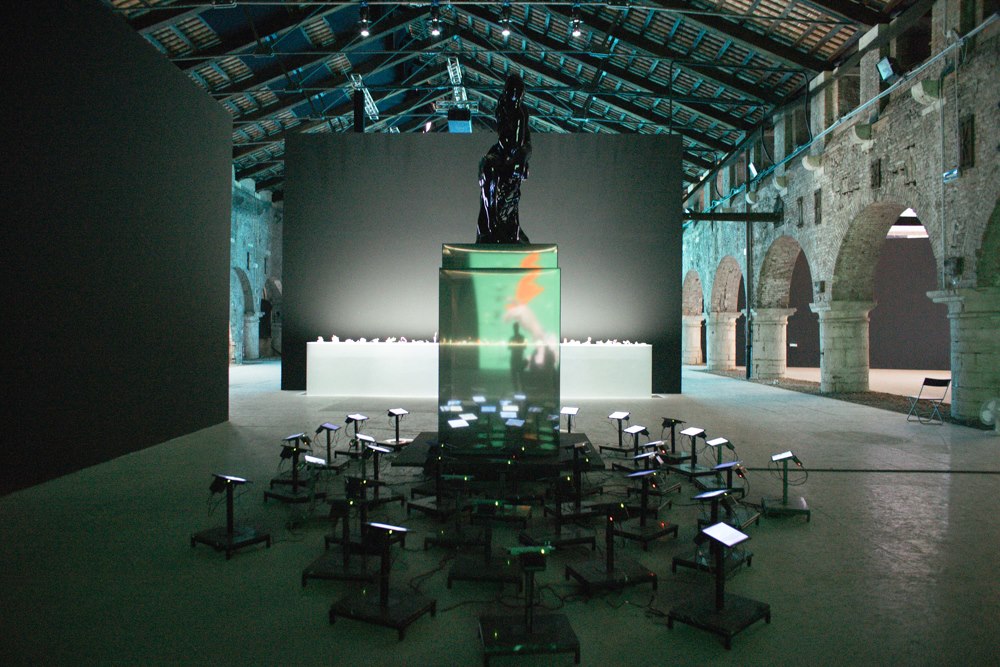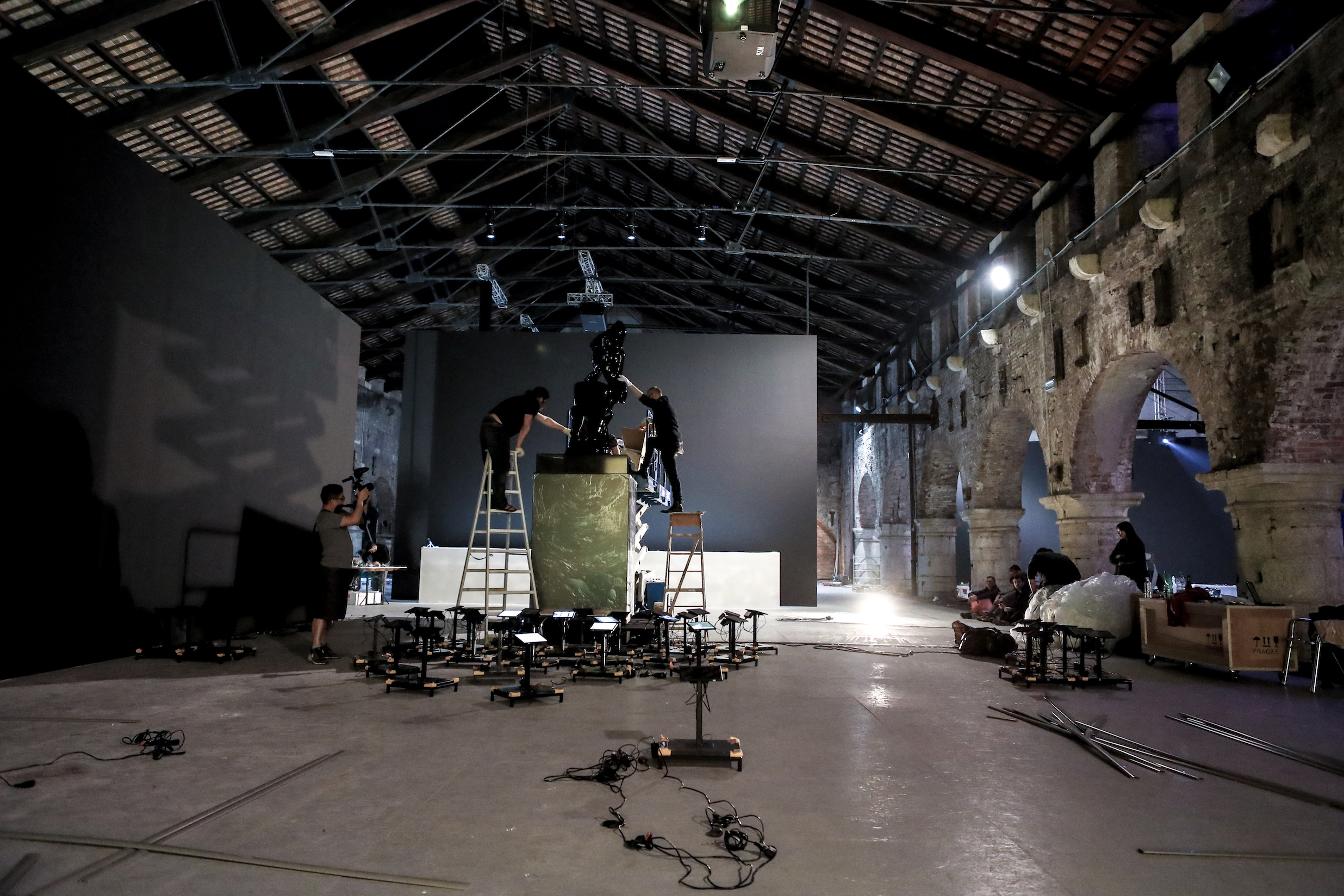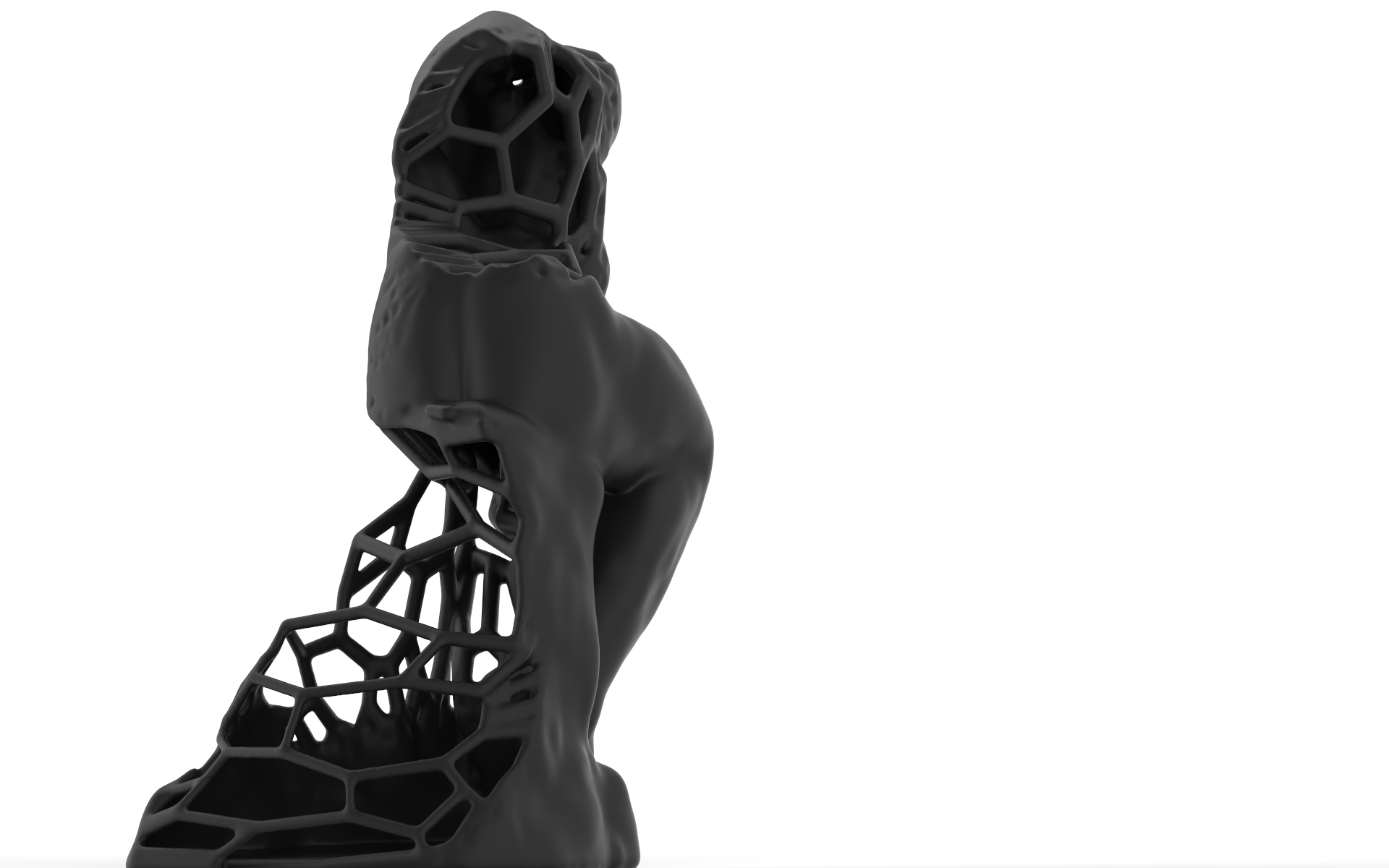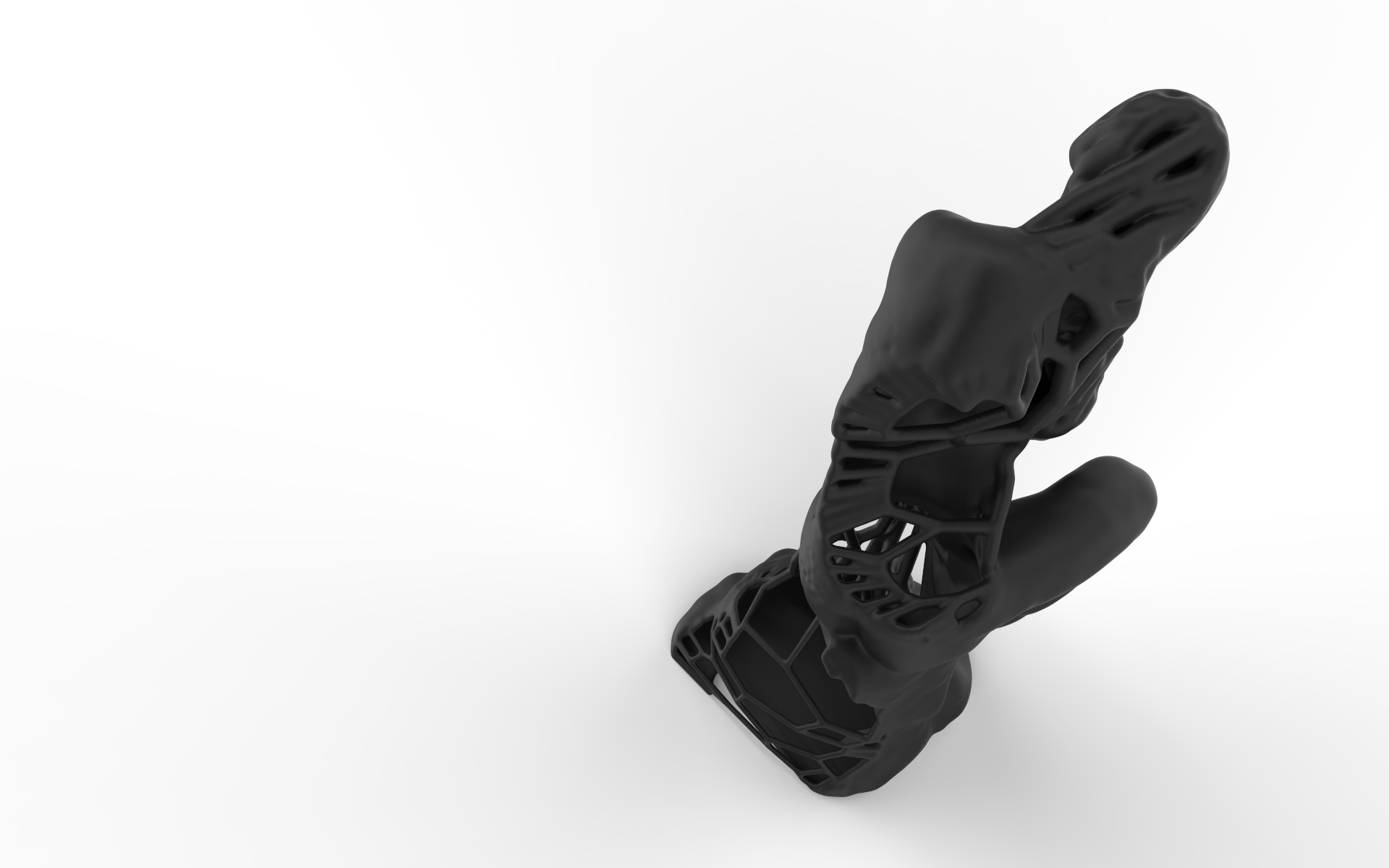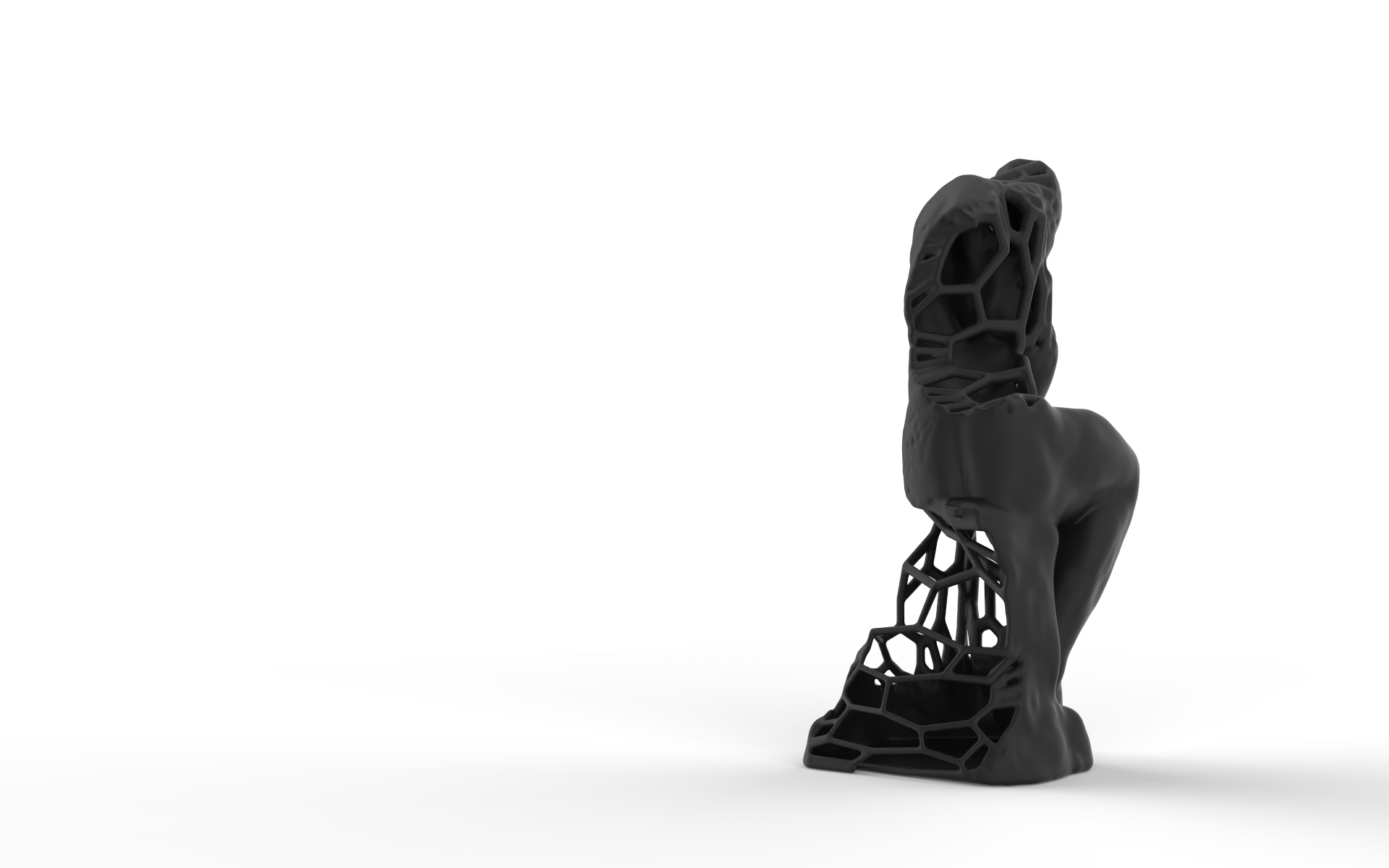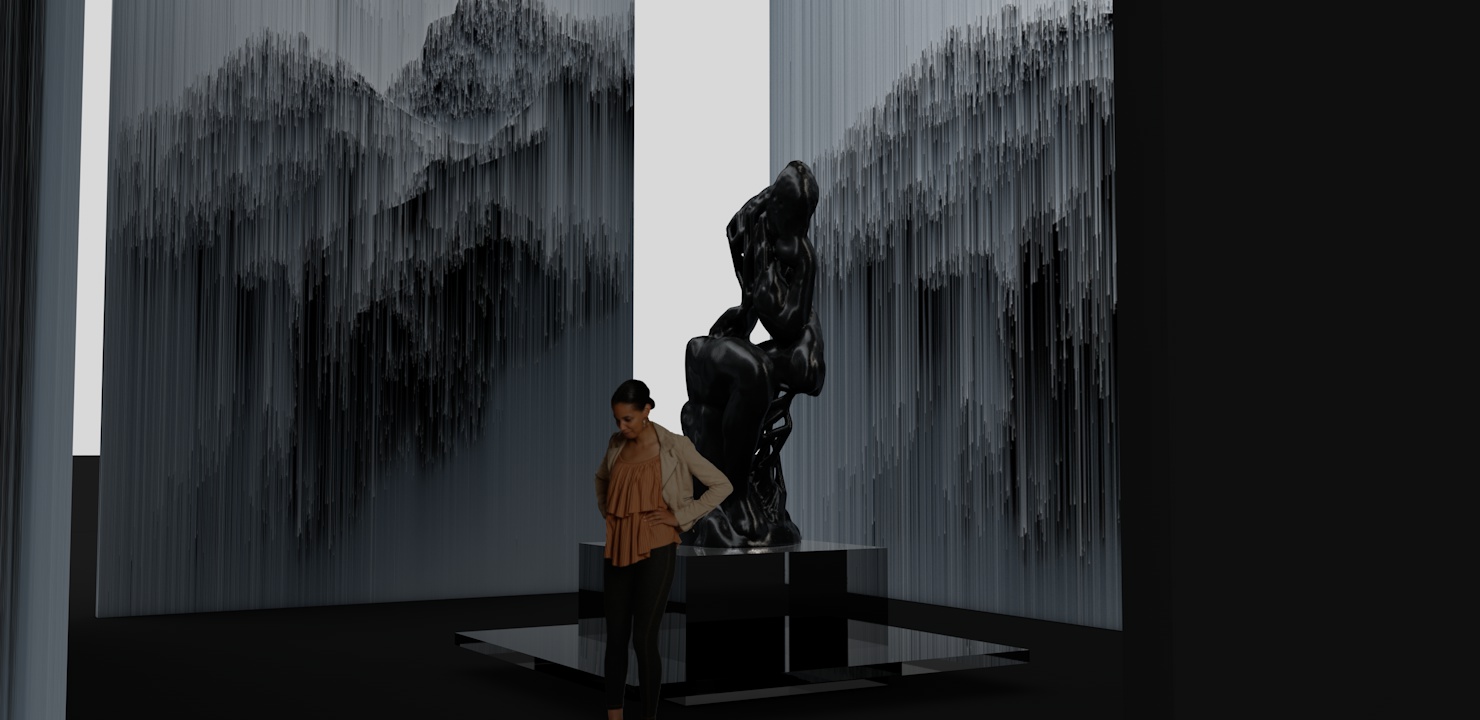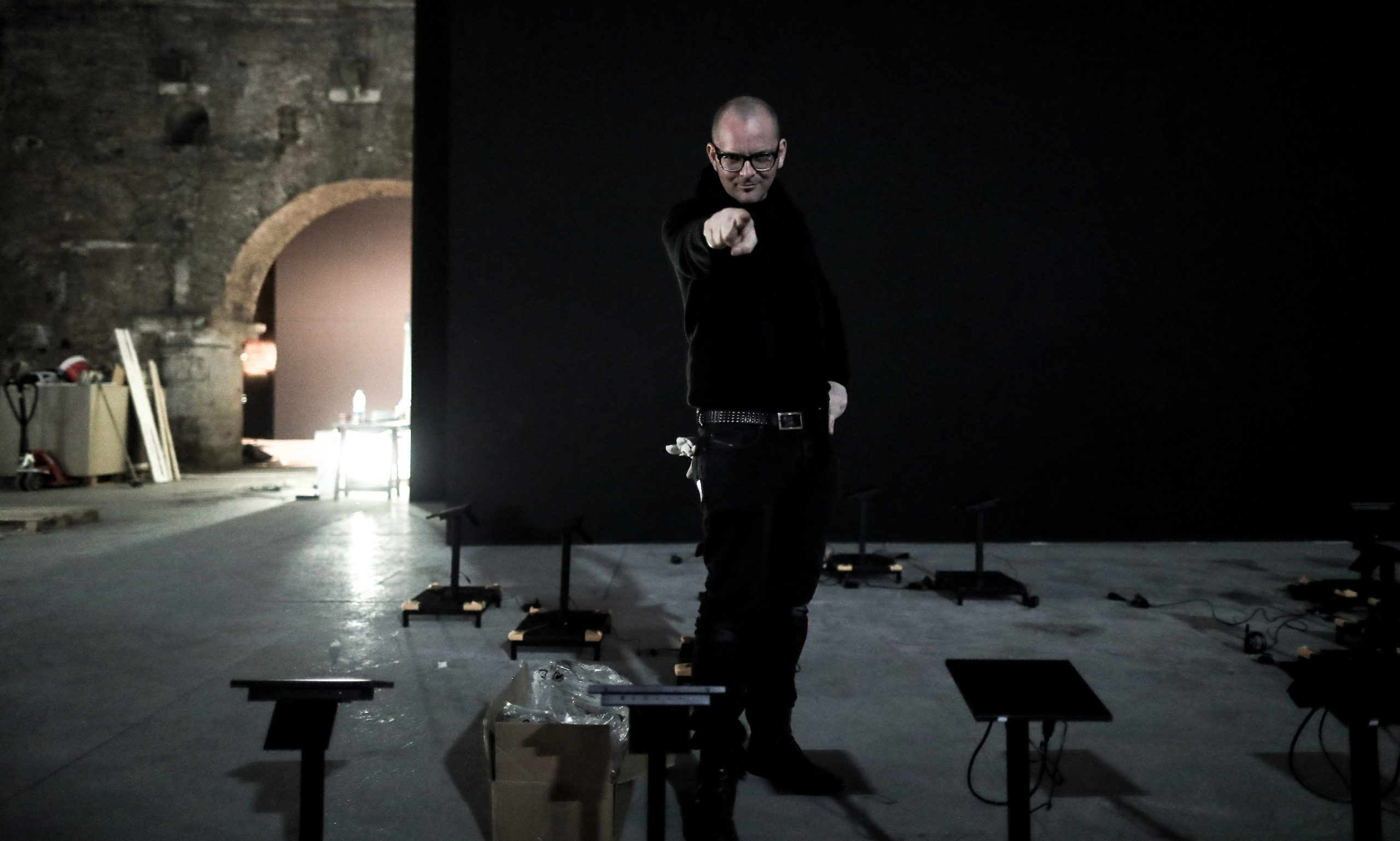THE COUNCIL
Commissioned for the 57th Venice Biennale 2017.
Belgian artist Frederik De Wilde is taking part in the international group exhibition Hyperpavilion during the 57th Venice Biennale (2017) . The exhibition seeks to explore the ways in which the digital and physical worlds have merged to create an entangled hybrid reality that encompasses us globally, and now offers a new aesthetic with new consequences and new organisation.
Post-digital is not a new medium anymore. Digitalisation leads us to post-media, and that in turn suggests hybridisation where things become indiscernible from one other, ultimately leading to a totally homogenous implosion of heterotopias. De Wilde will present a new artwork The Council, where art, science and technology merge in an intriguing way.
The artwork is inspired by the iconic sculpture the Thinker from Rodin that portrays a nude male figure in deep contemplation.De Wilde wondered: “What is The Thinker thinking NOW? How would a 21st Century Thinker look, feel and think like?”
These seemingly simple questions gave rise to monumental artwork The Council. The artwork (installation) consists of a 3D-printed sculpture equipped with distributed artificial brains (38 screens branching in space, each connected to Raspberry Pi’s running custom code in a mesh network). The Council presents us a glimpse of its ‘private,’ yet hyperconnected metaphysical musings; corrupted memories, digital ruins, uncertain spaces, random vectors of thought … by the means of image and sound (e.g. Amazon server room field recordings moving around by Perlin noise). The screens runs custom pixel sorting algorithms exposing the nature of digital images and how easily we can manipulate them. The videos and pictures are rapidly deconstructed and glitched. Glitches occur in our identity (de/re)constructions or through instabilities and errors in digitized financial markets (i.e. flash crashes).
The artwork explores Dirty New Media Art approaches and the non-neutrality of technological systems. The key element to ‘unlock’ De Wilde’s thinker is the spectator, which lies at the heart of The Council.
HyperPavilion is a large-scale contemporary art exhibition situated on the northern side of the Arsenale of Venice in three historic warehouses, adding up to 3000m2. Produced by Korean based company Fabulous Inc and curated by Philippe Riss-Schmidt. Hyperpavilion (may 13 – October 30 Arsenale Nord Venice)
https://myartguides.com/exhibitions/venice/hyperpavilion/
Pictures © Jiho Park; ©Studio_De Wilde

